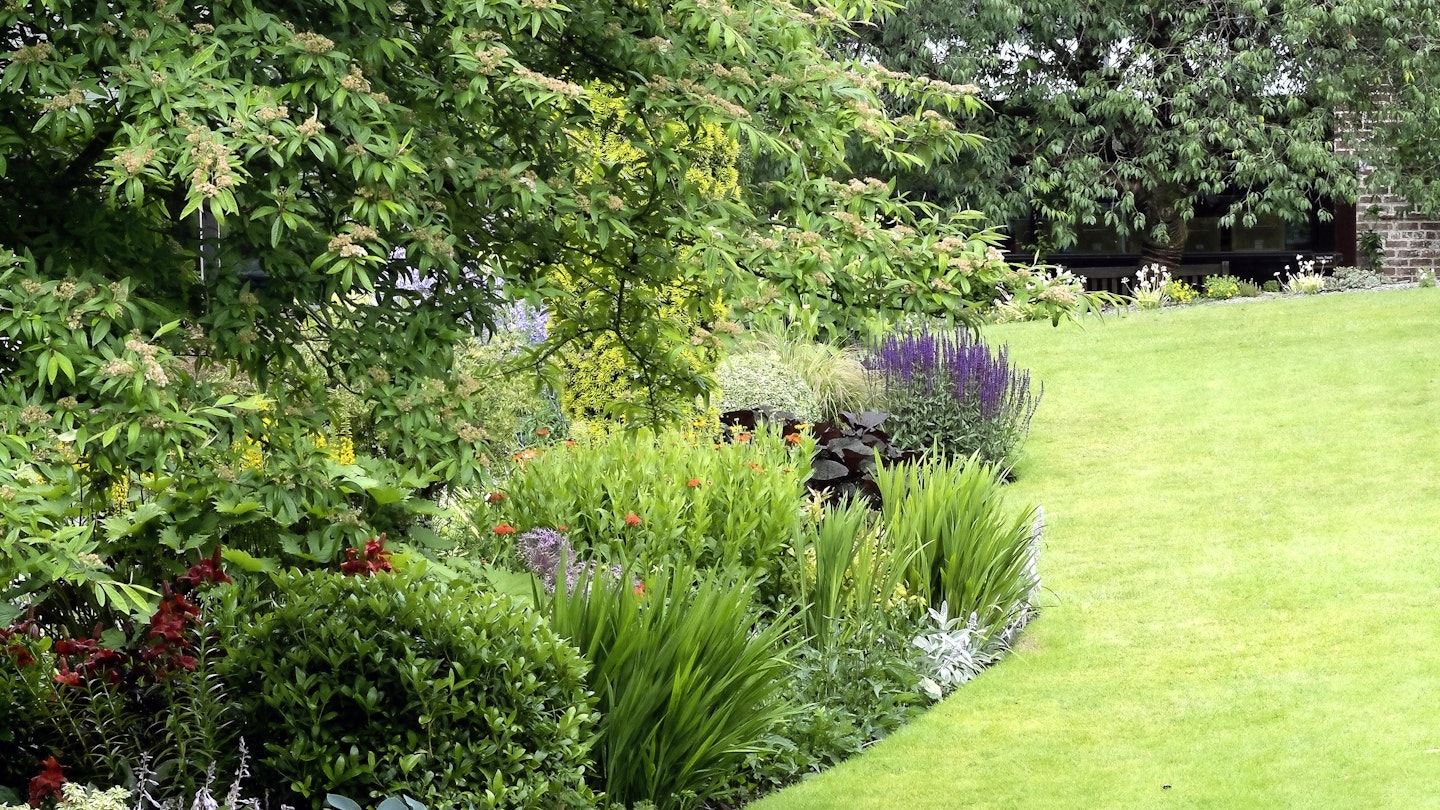Preparing for the perfect lawn
- Start with a good growing medium and a light sandy loam to a depth of at least 30cm (12in), which should be free draining. If the material under that holds water, then it would be best to get it drained or have the base slightly sloping to allow water to run off at one end. The growing medium should be firmed, but not overly compacted, and raked as level as possible, removing any dips or high spots.
- Use a good quality seed. In the UK climate, cool season grasses such as Fine Fescue, Browntop Bent or some of the finer dwarf perennial ryegrasses are best – a mixture of two or all three is even better. This gives good coverage and colour all year round (sown at around 50g/per sq m).
A pre-seed fertiliser with a higher phosphate content than nitrogen can be applied before the seeding. After seeding, the area should be given a light rake to get some of the seed covered. Depending on temperatures, seed takes between five and 14 days to come through. Before the seed comes through, make sure the area is adequately watered – but only a light application twice daily if there hasn’t been rain. Keep this up until the grass is well established.
Nurturing your growing lawn
- After a few weeks give the lawn a light roll to further firm the surface and apply a fertiliser that has higher Nitrogen content. Check the bag for application and longevity but make sure it’s evenly applied – too much on an area may cause scorching and kill that patch. The fertiliser should be watered in or applied just before rain.
- Once the grass has grown to 4cm (1½in) begin cutting it. Never cut off more than a third of the grass blade at a time – if the grass is 4cm (1½in) only remove 1-1.2cm (⅓-½in). A cylinder mower will result in a much better lawn compared to a rotary or hover mower. These may set you back a couple of thousand pounds, but enable ‘boxing’ or removal of clippings, preventing an excessive build-up of thatch or decaying grass, resulting in a soft, spongy lawn over time. Gradually reduce the cutting height by mowing every second or third day until you get it to the desired height, usually 1.2-1½cm (½-¾in).
- Lightly apply sand or loam (preferably the exact same material the lawn is constructed with) and using the back of a rake, fill in any depressions or low spots to bring them to a level. Scattering more grass seed into any thin or bare parts just before spreading the sand is also a good idea.
Lawn maintenance for year-round perfection
- On-going maintenance is a case of regular cutting; the more frequent, the better. Leaving a lawn for 10 days then cutting off a great amount of grass will not do it any favours. At a minimum it should be cut twice per week, with an occasional water if there is no rain. Fescues and bent grasses have good drought tolerance and may go brown or even dormant if they get too dry, but they do bounce back. They also don’t need too much fertiliser –half the recommended rate on the packaging!
- Once or twice a year, scarify the lawn lightly once it’s well established. This involves removing any dead or decaying grass and can be done with a springback rake or hiring a mechanical scarifier. Be careful not to go too deep into the surface.
- Take a garden fork and push it into the ground at 15cm (6in) intervals across the lawn a couple of times a year. This eases any compaction and aids drainage. If you can get the same material the lawn was constructed with, a couple of light coverings can also be carried out while there’s still growth, but be wary of smothering the grass.
